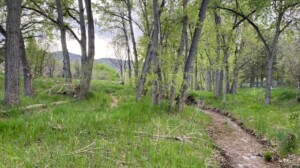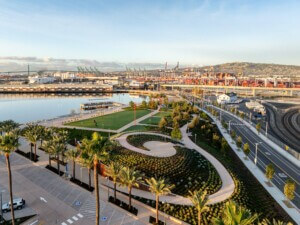Chicago-based UrbanLab has a knack for combining water infrastructure with architecture and landscape to find new urban forms. In the 2014 Venice Biennale, the studio presented the Free Water District (FWD), an urban-scale multiuse, multi-environment development that would encourage industry through a controlled, but free, use of Great Lakes water. In its latest commission, UrbanLab has been asked to address an even more complex urban situation in China.
The Yangming Archipelago in Changde, Hunan, China, will be a new district that will accommodate 600,000 people in five square miles. Changde is part of a larger program in China to implement large water-infrastructure projects in order to improve urban water quality. At the heart of the project is an island-filled lake, which will act as an ecological, as well as a social and cultural space. The Yangming Archipelago also includes a dense system of public transportation and housing, integrated into eco-boulevards.
Eco-boulevards, a concept that can be found in many of the studio’s proposals, put water at the center of urban improvement. The idea is based on case-by-base performance-based infrastructural landscapes. These rich boulevards would come in many forms and sizes, but they would all function as more
than a space for vehicular movement, providing social, ecological, and energy amenities. The boulevards would traverse the city with integrated water-filtration and water-retention technologies,a space for vehicular movement, providing social, ecological, and energy amenities. The boulevards would traverse the city with integrated water-filtration and water-retention technologies, a space for vehicular movement, providing social, ecological, and energy amenities. The boulevards would traverse the city with integrated water-filtration and water-retention technologies, both passive and active. The stitching of nature to the larger urban environment would connect formerly disparate parts of the city with a common civic space.










